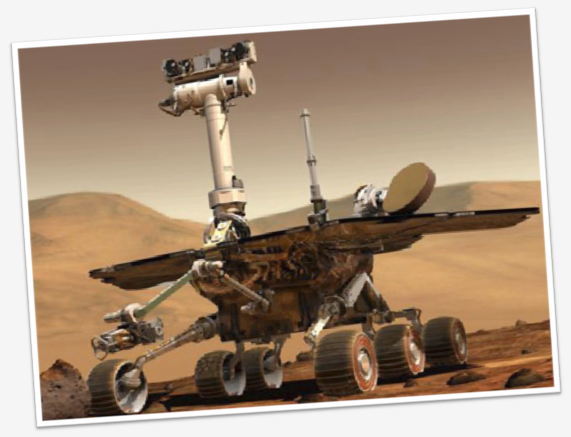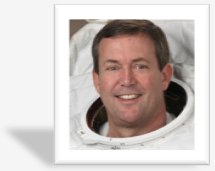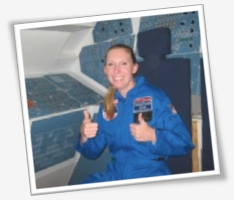 For current events in your class, use the Earth Observatory website for NASA satellite images showing the path of exposed ground left in the wake of recent tornadoes. You will find images taken by the Moderate Resolution Imaging Spectroradiometer, or MODIS, aboard NASA’s Aqua satellite on April 28, 2011.
For current events in your class, use the Earth Observatory website for NASA satellite images showing the path of exposed ground left in the wake of recent tornadoes. You will find images taken by the Moderate Resolution Imaging Spectroradiometer, or MODIS, aboard NASA’s Aqua satellite on April 28, 2011.To find more information about tornado images on the Earth Observatory website, refer to the Earth Observatory article in NEON.
Link to the NES Virtual Campus home page.

 Only one month is left for current NASA Explorer Schools participants to submit their online enrollment forms for the 2011-2012 school year before NES closes for summer recess. You don’t want to miss out on engaging classroom resources from NES, including 20 new classroom modules, student engagement opportunities with NASA scientists and engineers, and exclusive recognition opportunities that NES will offer next year.
Only one month is left for current NASA Explorer Schools participants to submit their online enrollment forms for the 2011-2012 school year before NES closes for summer recess. You don’t want to miss out on engaging classroom resources from NES, including 20 new classroom modules, student engagement opportunities with NASA scientists and engineers, and exclusive recognition opportunities that NES will offer next year.
 Spirit last communicated on March 22, 2010, as Martian winter approached and the rover’s solar-energy supply declined. The rover operated for more than six years after landing in January 2004 for what was planned as a three-month mission. NASA checked frequently in recent months for possible reawakening of Spirit as solar energy available to the rover increased during Martian spring. A series of additional re-contact attempts ended today, designed for various possible combinations of recoverable conditions.
Spirit last communicated on March 22, 2010, as Martian winter approached and the rover’s solar-energy supply declined. The rover operated for more than six years after landing in January 2004 for what was planned as a three-month mission. NASA checked frequently in recent months for possible reawakening of Spirit as solar energy available to the rover increased during Martian spring. A series of additional re-contact attempts ended today, designed for various possible combinations of recoverable conditions. NASA Explorer Schools would like to extend an invitation to K-12 students across the United States to participate in a webchat with astronaut and veteran spacewalker Mike Foreman. The event will take place from 1 to 2 p.m. EST on Nov. 22, 2010. Foreman will answer questions about his spacewalking experiences, living and working in the microgravity environment of space, and his unique career path from high school through astronaut training.
NASA Explorer Schools would like to extend an invitation to K-12 students across the United States to participate in a webchat with astronaut and veteran spacewalker Mike Foreman. The event will take place from 1 to 2 p.m. EST on Nov. 22, 2010. Foreman will answer questions about his spacewalking experiences, living and working in the microgravity environment of space, and his unique career path from high school through astronaut training. If you are an NES participant in the 2010-2011 school year, you can now register for the upcoming school year. When
If you are an NES participant in the 2010-2011 school year, you can now register for the upcoming school year. When  As students in NASA Explorer Schools educator Kaci Heins’ class worked through the Smart Skies NES module, she thought it would be amazing if she could take a field trip out to her local airport to see air traffic controllers in action. Heins arranged for her students to go up inside the air traffic control tower, talk to the controllers, and see the planes take off and land. The students learned how the controllers keep the passengers and the planes safe. They also visited the airport fire station where the students saw the trucks, tried on the fire gear, and saw the truck spray water across the tarmac. Heins reports, “It was one of the best field trips I have ever done and the students loved every second of it! It is experiences like these that can make the biggest impact on our students. I hope you can try to work something out like this in your area!”
As students in NASA Explorer Schools educator Kaci Heins’ class worked through the Smart Skies NES module, she thought it would be amazing if she could take a field trip out to her local airport to see air traffic controllers in action. Heins arranged for her students to go up inside the air traffic control tower, talk to the controllers, and see the planes take off and land. The students learned how the controllers keep the passengers and the planes safe. They also visited the airport fire station where the students saw the trucks, tried on the fire gear, and saw the truck spray water across the tarmac. Heins reports, “It was one of the best field trips I have ever done and the students loved every second of it! It is experiences like these that can make the biggest impact on our students. I hope you can try to work something out like this in your area!” In this episode of NASA Now, Camille Alleyne, Assistant Program Scientist for the International Space Station discusses the unique research environment onboard the ISS while sharing information about many of the past, present and planned experiments. To date, more than three hundred experiments have been conducted on the ISS. Through this research, we will better understand the effects of microgravity on the human body, further develop technology, and expand our knowledge about our Earth and about the universe.
In this episode of NASA Now, Camille Alleyne, Assistant Program Scientist for the International Space Station discusses the unique research environment onboard the ISS while sharing information about many of the past, present and planned experiments. To date, more than three hundred experiments have been conducted on the ISS. Through this research, we will better understand the effects of microgravity on the human body, further develop technology, and expand our knowledge about our Earth and about the universe.